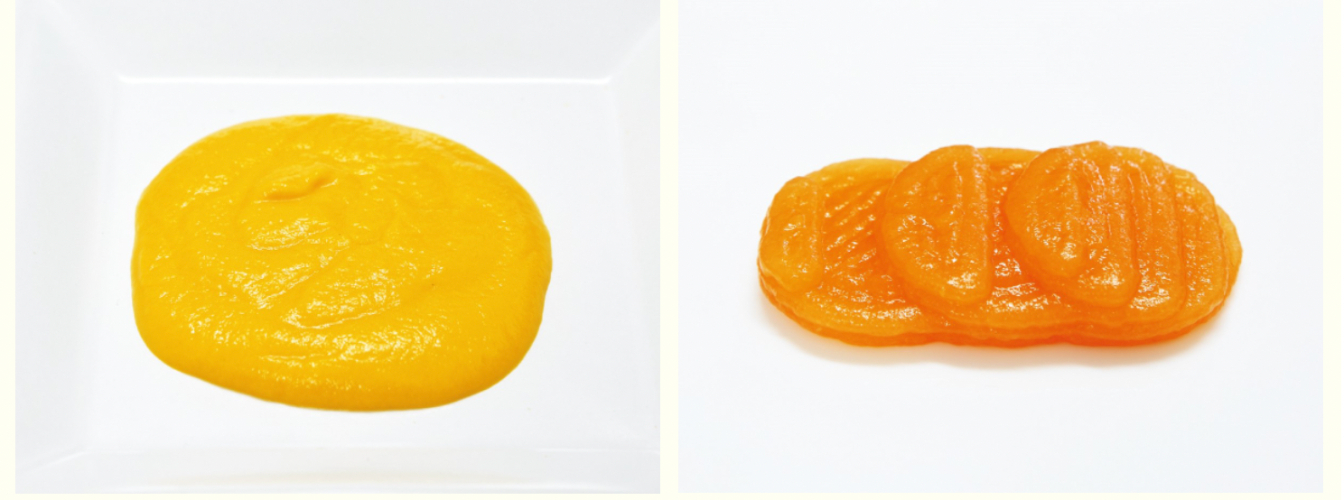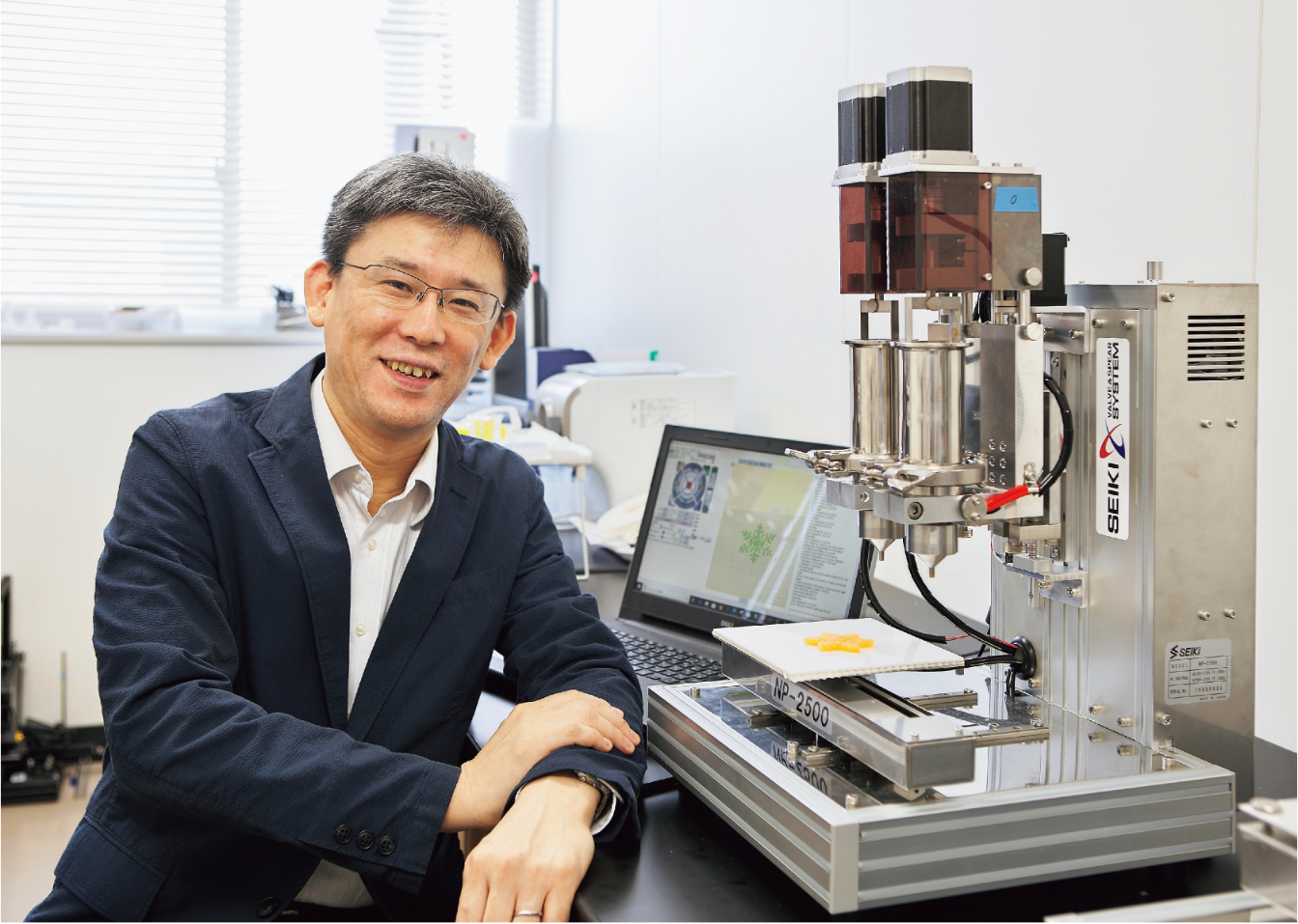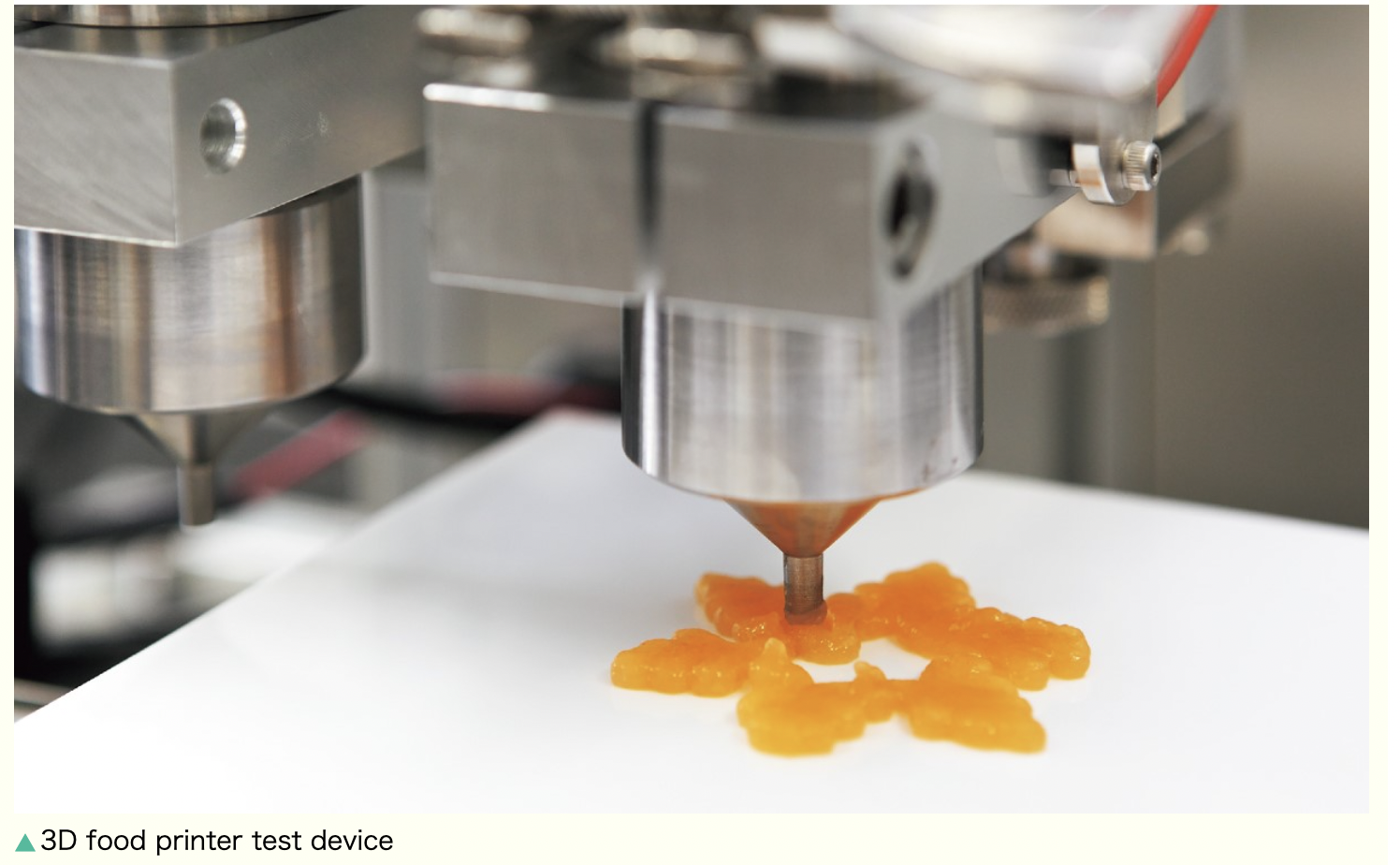
J-STORIES ー 3D printers are already widely used in model making and manufacturing. Now, researchers aim to use them in the food industry to create attractive and tasty food for seniors.
Soft food in various shapes for seniors can be produced from meat, fish, or vegetables paste, which is the “ink” for the printer. This has the twin benefits of allowing seniors, whose ability to chew and swallow food has become weaker, to continue enjoying meals, and lessening the burden of giving care.
Masaru Kawakami, an associate professor at Yamagata University, is working on the development of a 3D printer for food. While using 3D printers for research on proteins and other materials, he had the idea of making soft foods using vegetable, meat, and fish gels, then developed a 3D printer for food products together with a local company.

Many of the foods for seniors currently on the market lack taste and texture, so are far from fun to eat. With a food 3D printer, if personalized data such as preferred firmness is received beforehand, the machine can make perfect food for seniors. After inserting the food gel in the printer, the “cooking time” until the food is ready is around five minutes.
The food 3D printer doesn’t just help senior citizens; it provides value for the caregiving facilities that look after them too. According to Japan's Ministry of Health, Labor and Welfare, as the population ages there will be a shortage of approximately 220,000 caregivers in fiscal 2023 and 690,000 in 2040. The burden on staff and facilities caring for elderly patients with problems of differing severity chewing or swallowing continues to increase.
Food 3D printers have not yet been commercialized, and issues remain before they can be put to practical use. As well as bringing the cost down, which is currently several million yen per custom-made unit, researchers need to develop a way to simplify the time-consuming process of preparing ingredients before they are poured into the machine.
“There is no need to particularly use a machine like a 3D printer to make delicious food already made by human hands,” he said in an online interview with J-Stories. “There is a need, however, for food 3D printers to produce better alternatives to current food for seniors and space food.”
Translation/Editing by Tony McNicol and Toshi Maeda
Top page photo credit: Yamagata University website
For inquires about this article, please contact us at jstories@pacificbridge.jp
***
***
Click here for the Japanese version of the article.

![[Podcast] Japanese technology to supercharge human fertility (Part 3)](https://storage.googleapis.com/jstories-cms.appspot.com/images/1766558713084place-for-scientific-research-2025-03-07-14-08-49-utc%20(1)_smallthumbnail.jpeg)
![[Podcast] Japanese technology to supercharge human fertility (Part 2)](https://storage.googleapis.com/jstories-cms.appspot.com/images/1765863548035unnamed-7_smallthumbnail.jpg)
![[Podcast] Japanese technology to supercharge human fertility (Part 1)](https://storage.googleapis.com/jstories-cms.appspot.com/images/1765440905082unnamed_smallthumbnail.jpg)

![[Podcast] Japanese technology to supercharge human fertility (Part 3)](https://storage.googleapis.com/jstories-cms.appspot.com/images/1766558713084place-for-scientific-research-2025-03-07-14-08-49-utc%20(1)_bigthumbnail.jpeg)
![[Interview: Part 2] A digital approach to tackle child hunger in Japan with dignity](https://storage.googleapis.com/jstories-cms.appspot.com/images/1766130666509unnamed_bigthumbnail.jpg)
![[Podcast] Japanese technology to supercharge human fertility (Part 2)](https://storage.googleapis.com/jstories-cms.appspot.com/images/1765863548035unnamed-7_bigthumbnail.jpg)
![[Podcast] Japanese technology to supercharge human fertility (Part 1)](https://storage.googleapis.com/jstories-cms.appspot.com/images/1765440905082unnamed_bigthumbnail.jpg)
_bigthumbnail.jpeg)





![[Interview] When digital and physical worlds meet](https://storage.googleapis.com/jstories-cms.appspot.com/images/1747974430456unnamed-2_smallthumbnail.png)




_smallthumbnail.jpeg)
![[Interview: Part 1] From nourishing souls to feeding the hungry](https://storage.googleapis.com/jstories-cms.appspot.com/images/1763695595492unnamed_smallthumbnail.jpg)

